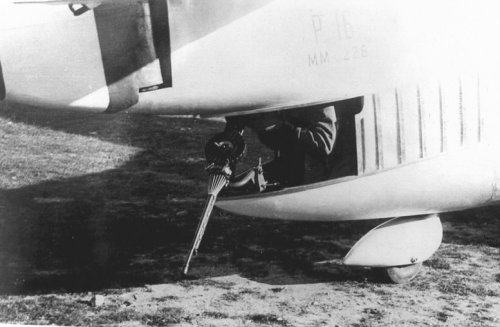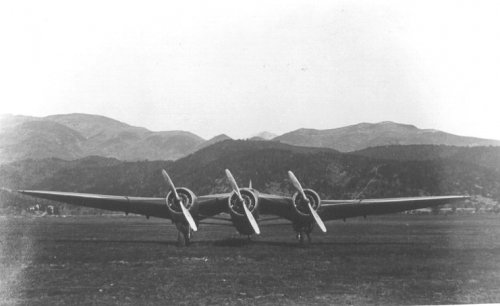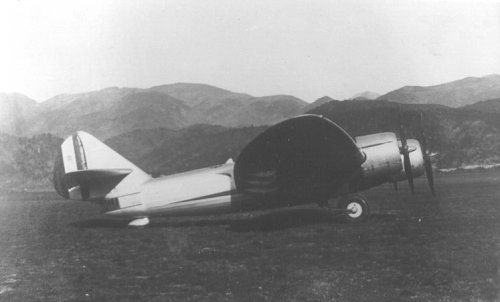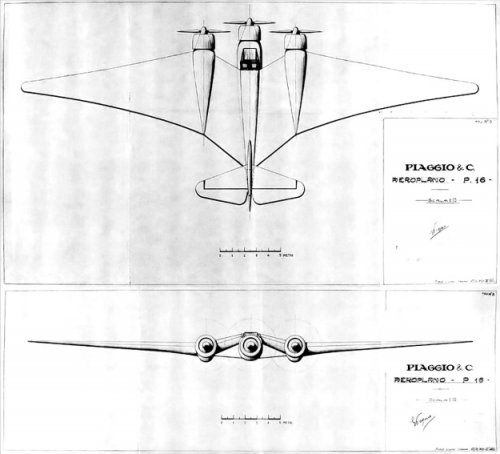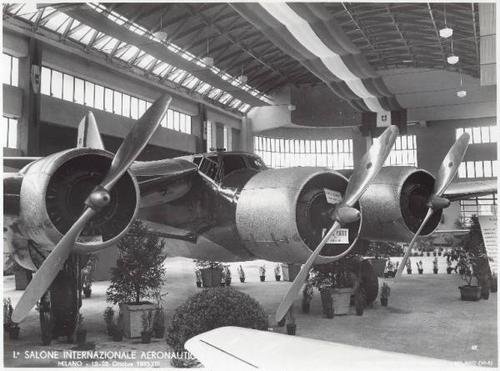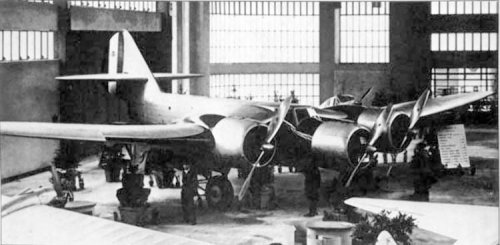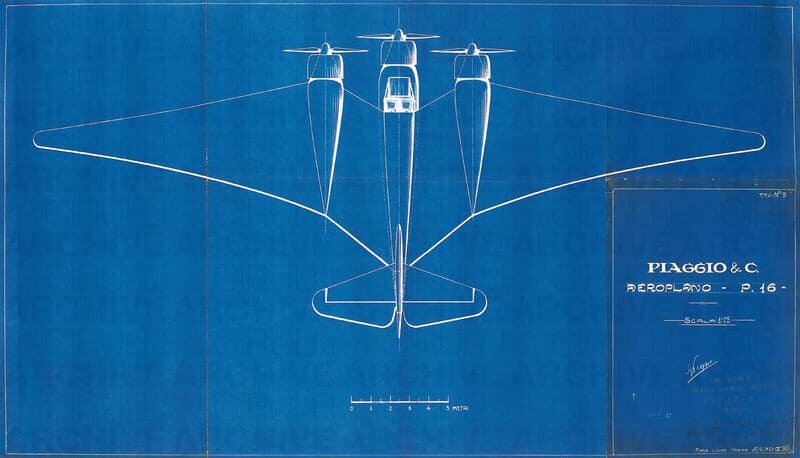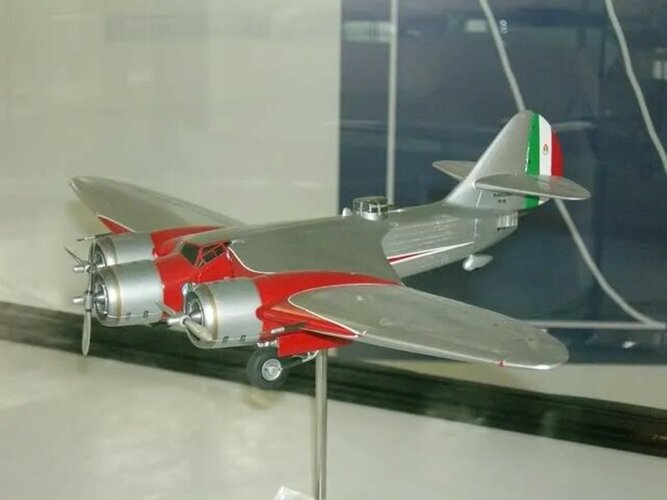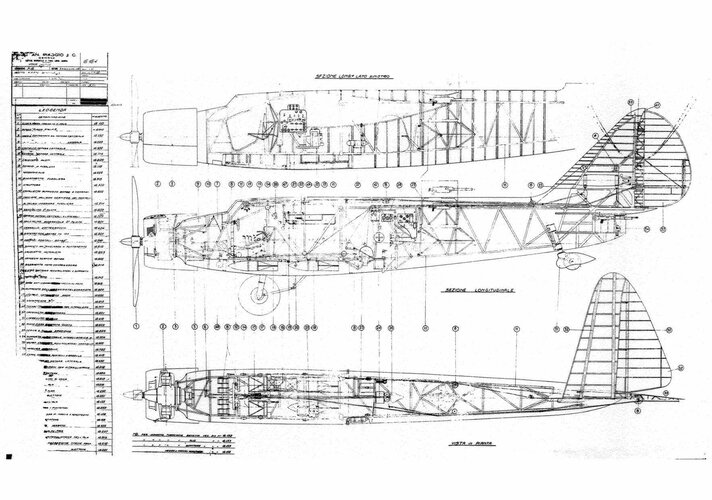Hi my friends,
in anotther thread Theponja asked for a three-view drawing of the P.16 (the Piaggio one, not to be confused with the Pilatus P.16). Unfortunately, I lack any sort of drawing related to the P.16 but I have some interesting pictures and information about it.
The origin of the P.16 is a little mistery: the few sources about it state that it was a proposal answering the Regia Aeronautica requirement that originated the SIAI-Marchetti S.81 Pipistrello but in a press release (that I was unable to find) Piaggio stated: "...but Regia Aeronautica preferred the S.79...". In fact, in early thirties any aeronautical engineer submitted all ideas he had and the various manufacturers hoped to build everything they had on the paper or in prototype form...
Another, more intriguing, aspect of the mistery is that ing. (eng.) Giovanni Pegna, technical director of Piaggio, was completely unfamiliar with metal airframes and designed exclusively wooden aircraft. Then, who was the designer of the P.16? Perhaps the author of the P.16 project was a young ing. Giuseppe Gabrielli (of FIAT fame), that since August 29, 1927, was assistant technical director of the Piaggio design bureau in Finale Ligure Marina (Savona), about 70 km West of Genoa. Another possibility was ing. Giuseppe Foà (later Joseph Victor Foa) but he was too young and joined the Pegna team in 1935, in Reggio Emilia, when Pegna already departed from Piaggio.
The only prototype of P.16 was ordered on July 4, 1933 (but Italian contracts usually are finalized after the building was already started, or finished, following a letter of intent and sometime after an informal mail or even verbal order...) and was officially flown in February 1935 (the first official test flight in presence of Regia Aeronautica officers, but the aircraft had alredy made its first flight, at Villanova d'Albenga Airport, about 25 km from the experimental department of the factory, in November 1934, with Mario Gamna at the controls).
P.16 is described in Piaggio literature as the first Piaggio aircraft of entirely metallic construction and with variable pitch propellers designed by ing. Corradino D'Ascanio. In fact, the aircraft was of mixed construction and the reare part of the belly was fabric-covered. The official literature quotes "a tail powered turret (the only case in the Italian aviation history)" but as you can see in the picture I enclose, the defensive position had an hand-held machine-gun (another was in a dorsal position and other two in wing roots).
We have also a picture of a wind-tunnel model of a seaplane torpedo bomber version of P.16, probably a not-buil concurrent of SIAI-Marchetti S.55.
Technical data of this strategic bomber, with a crew of five, were the following (from various sources):
Power plant: three Piaggio P.IX RC Stella II, 9-cylinder single-row, radial engines rated at 610/700 CV (P.IX was a developed version of the Gnome-et-Rhône GR.9K Mistral), with two-blade variable pitch metal propellers.
Span: 22.00 m
Length: 13.40 m
Height: 4.90 m
Wing area: 70.0 sq.m
Empty weight: 5,600 kg
Loaded weight: 8,450 kg
Max speed: 400 kmh at 5,000 m
Cruise speed: 324 kmh
Climb: to 6,000 in 17 min
Service ceiling: 5,800 m
Combat radius: 560 km
Range: 1,496 km (2,000 km with 500-kg bombload)
Armament: four 7.7-mm Lewis Mk.1 machine-gun and 1,000 kg bombload
in anotther thread Theponja asked for a three-view drawing of the P.16 (the Piaggio one, not to be confused with the Pilatus P.16). Unfortunately, I lack any sort of drawing related to the P.16 but I have some interesting pictures and information about it.
The origin of the P.16 is a little mistery: the few sources about it state that it was a proposal answering the Regia Aeronautica requirement that originated the SIAI-Marchetti S.81 Pipistrello but in a press release (that I was unable to find) Piaggio stated: "...but Regia Aeronautica preferred the S.79...". In fact, in early thirties any aeronautical engineer submitted all ideas he had and the various manufacturers hoped to build everything they had on the paper or in prototype form...
Another, more intriguing, aspect of the mistery is that ing. (eng.) Giovanni Pegna, technical director of Piaggio, was completely unfamiliar with metal airframes and designed exclusively wooden aircraft. Then, who was the designer of the P.16? Perhaps the author of the P.16 project was a young ing. Giuseppe Gabrielli (of FIAT fame), that since August 29, 1927, was assistant technical director of the Piaggio design bureau in Finale Ligure Marina (Savona), about 70 km West of Genoa. Another possibility was ing. Giuseppe Foà (later Joseph Victor Foa) but he was too young and joined the Pegna team in 1935, in Reggio Emilia, when Pegna already departed from Piaggio.
The only prototype of P.16 was ordered on July 4, 1933 (but Italian contracts usually are finalized after the building was already started, or finished, following a letter of intent and sometime after an informal mail or even verbal order...) and was officially flown in February 1935 (the first official test flight in presence of Regia Aeronautica officers, but the aircraft had alredy made its first flight, at Villanova d'Albenga Airport, about 25 km from the experimental department of the factory, in November 1934, with Mario Gamna at the controls).
P.16 is described in Piaggio literature as the first Piaggio aircraft of entirely metallic construction and with variable pitch propellers designed by ing. Corradino D'Ascanio. In fact, the aircraft was of mixed construction and the reare part of the belly was fabric-covered. The official literature quotes "a tail powered turret (the only case in the Italian aviation history)" but as you can see in the picture I enclose, the defensive position had an hand-held machine-gun (another was in a dorsal position and other two in wing roots).
We have also a picture of a wind-tunnel model of a seaplane torpedo bomber version of P.16, probably a not-buil concurrent of SIAI-Marchetti S.55.
Technical data of this strategic bomber, with a crew of five, were the following (from various sources):
Power plant: three Piaggio P.IX RC Stella II, 9-cylinder single-row, radial engines rated at 610/700 CV (P.IX was a developed version of the Gnome-et-Rhône GR.9K Mistral), with two-blade variable pitch metal propellers.
Span: 22.00 m
Length: 13.40 m
Height: 4.90 m
Wing area: 70.0 sq.m
Empty weight: 5,600 kg
Loaded weight: 8,450 kg
Max speed: 400 kmh at 5,000 m
Cruise speed: 324 kmh
Climb: to 6,000 in 17 min
Service ceiling: 5,800 m
Combat radius: 560 km
Range: 1,496 km (2,000 km with 500-kg bombload)
Armament: four 7.7-mm Lewis Mk.1 machine-gun and 1,000 kg bombload

